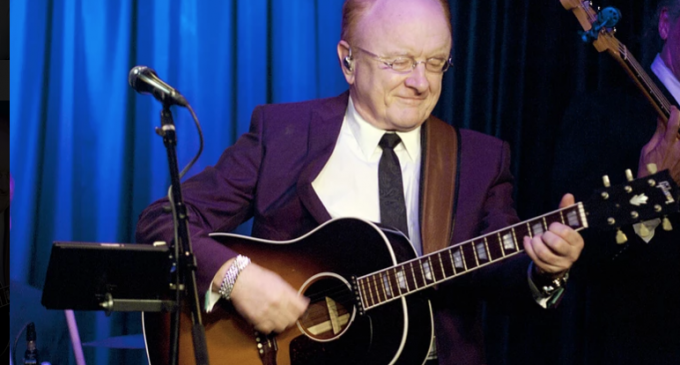Peter Asher Q&A: Producing Linda Ronstadt & More | Best Classic Bands

In the first part of our interview with the legendary Peter Asher—most of which has never before been published—the British-born producer and performer talked mostly about his early days as half of the duo Peter and Gordon, his relationship with the Beatles and their Apple Records and his work with James Taylor as producer and manager. In part two, we discuss the vital role he played in the creation of Linda Ronstadt’s recordings and his management of the singer, as well as some of his other production clients.When you took on the management and production of Linda Ronstadt, she was known as the lead singer of the Stone Poneys. What made you want to work with her? Peter Asher: My God, what wasn’t there? Somebody said, “You’ve got to come see this girl at the Bitter End. She’s amazing.” There was this incredibly gorgeous, ridiculously hot girl wearing short shorts and bare feet, the epitome of California hotness in every respect. Then she turns out to be one of the greatest singers you’ve ever heard in your life, just nailing these incredible songs with emotion, with control and a big amazing voice. I was overwhelmed. Did you know right away what you wanted to do with her in the studio? I didn’t immediately sign her. I had just started managing Kate Taylor, James’ sister, and I wasn’t sure whether that would be a potential conflict. Linda had a complicated setup—she had a manager she wasn’t very happy with and wanted to get away from—but I said, “Look, you’re brilliant,” and eventually we met again in California. I can’t remember if I first agreed to be her producer or her manager, but I became both and finished the record she was in the middle of, which was Don’t Cry Now. Then we did Heart Like a Wheel and things started to go crazy.Watch Peter Asher joining Ronstadt and band live in 1977 for “It’s So Easy”James Taylor wrote his own songs but Linda didn’t. How did you choose songs for her?She chose a lot herself. People tend to assume that I was the mastermind and she was the chick but it isn’t true. She’s brilliant at finding songs. Some of the ideas were mine, like “It’s So Easy,” another Buddy Holly song. But she introduced me to John David Souther, to Lowell George, even Jimmy Webb. I knew “MacArthur Park” and “Up, Up and Away” but I really didn’t know his body of work. One of Linda’s remarkable abilities is finding songs that she can do and then wrestling a whole new meaning and intensity out of them. When she sings a song you can believe it. I don’t listen to lyrics that much—I’m much more listening to the melody. But in her case, when she sings those words she’s got some example in mind. She’s not singing some generic song about heartbreak. She’s remembering some bastard of a guy who broke her heart.What do you consider Linda’s best work?For me, “You’re No Good,” because it’s a producer’s record, but for Linda probably the Nelson Riddle-arranged albums. If anything I was a naysayer, but she said, “I want to do these kinds of songs and rescue them from the elevator and make people really listen because they’re such great songs.”And James?“Fire and Rain” is a good record. The JT album. But he sings everything well. He was identified as a white folk singer but he was trying to sing like Sam Cooke and Ray Charles. He didn’t succeed but by taking some of the soulful stuff that he was devoted to, that made him different from everybody else.Linda caught some flak for the 1980 Mad Love album, where she sort of went new wave. She did. If you look at punk as a musical influence, then you’re already doomed but it’s not that. It’s a whole moral, anarchistic, lifestyle, sociological [movement] and it’s true that we were ignoring all that. We just said that there was something musical happening there that we could learn from and take advantage of. And yes, then Elvis Costello said some mean things and we went, “Screw you.” [Editor’s note: Costello was not impressed at the time with Ronstadt’s covers of three of his songs on the album.] I’m a huge fan of his though—the guy is a genius. He and Randy Newman are two people who write better songs now than they ever did. But yeah, we knew we were asking for trouble by doing that because we were taking something that was a social phenomenon and lifting just the musical aspect. There’s nothing wrong with that. We weren’t saying we were fighting for the revolution. We just liked this kind of music.Did you choose the engineers that you worked with?Yes. Val Garay was the original engineer on most of that stuff and then we gradually moved on to George Massenburg, who Linda had met through Lowell George.You’ve worked with many other artists but do you feel that, because of James and Linda, you’ve been miscast as someone who only works with California soft-rock?A little bit, yeah. But James didn’t like L.A. at all.
Source: Peter Asher Q&A: Producing Linda Ronstadt & More | Best Classic Bands




There are no comments at the moment, do you want to add one?
Write a comment